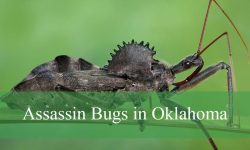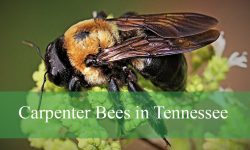Kissing bugs—known scientifically as triatomine bugs—are among the most enigmatic nighttime insects found in New Mexico. Their quiet flight, flattened bodies, and stealthy feeding habits make them difficult to detect, yet their presence has significant ecological and medical implications. Although they resemble harmless beetles or large leaf-footed bugs, kissing bugs possess specialized mouthparts and venom-like salivary compounds that allow them to bite and feed on blood with remarkable efficiency.
New Mexico’s warm desert nights, adobe-style architecture, and abundance of wildlife create ideal conditions for these insects to thrive. Their nighttime activity, combined with their ability to locate sleeping hosts, has fascinated entomologists for decades. While their association with Chagas disease often generates fear, understanding the true biology of these insects reveals a far more complex story.
This article explores how kissing bugs in New Mexico bite at night, delving into their sensory biology, salivary chemistry, nocturnal strategies, and ecological adaptations. You will discover how these insects operate with such precision, why they select particular hosts, and how their nighttime behaviors evolved in the arid Southwest.
Kissing Bugs in New Mexico: An Overview

The Desert Climate Supports Their Nocturnal Lifestyle
New Mexico’s warm evenings and mild overnight temperatures provide a nearly perfect environment for triatomine activity. Unlike regions with humid or cold night climates, New Mexico offers extended windows for nighttime feeding.
The state’s deserts, piñon-juniper woodlands, and grasslands house key wildlife hosts such as packrats, woodrats, opossums, raccoons, and wild canids. These mammals provide blood meals and nesting debris that kissing bugs use as shelter.
Because many desert animals remain active at night, kissing bugs evolved to synchronize their feeding schedule with nocturnal wildlife activity.
Human Structures Provide Shelter and Warmth
Homes in New Mexico—especially older adobe houses, barns, and rural structures—offer cracks, foundation gaps, and roof vents where kissing bugs hide during the day. At night, they emerge to search for hosts.
Porches, outdoor lighting, and heat from indoor spaces often attract these insects. Their ability to flatten their bodies helps them conceal themselves in tight spaces, going unnoticed by homeowners.
The combination of human construction and natural terrain creates habitat overlap that increases nighttime encounters.
Triatomine Species in the Region
Several species occur in New Mexico, including Triatoma rubida, Triatoma protracta, and Triatoma lecticularia. These species vary in coloration and pattern but share similar feeding behavior.
Their physiology is adapted specifically for blood-feeding, using elongated mouthparts and specialized saliva that acts similarly to venom.
Understanding their species-level differences helps researchers track infection risks and ecological patterns.
The Anatomy Behind Their Nighttime Bites
Specialized Mouthparts Designed for Piercing
Kissing bugs feed using a proboscis-like structure called a rostrum. This elongated, needle-like organ contains two inner stylets that work together to pierce skin and locate blood vessels.
The rostrum bends beneath the insect’s head during the day but extends straight during feeding. Once inserted, the stylets separate slightly: one delivers saliva, and the other draws blood.
This dual-tube system allows steady suction without the insect needing to reposition repeatedly.
Their Saliva Acts Like Venom
Although not venom in the traditional sense, kissing bug saliva functions similarly. It contains anticoagulants, vasodilators, and numbing agents that prevent the host from feeling the bite.
These compounds immobilize the skin’s pain receptors and relax blood vessels, allowing a consistent blood flow. The biochemical mixture is so effective that many people never wake while being bitten.
This anesthetic quality is a key evolutionary adaptation for nocturnal feeding.
Mouthpart Flexibility Allows Deep Penetration
The stylets can penetrate to various depths depending on the host’s skin thickness. In humans, they often reach shallow capillaries. In thicker-skinned animals, they probe deeper.
Their probing technique is slow and deliberate. The bug moves the stylets in tiny increments, guided by sensory feedback from the host’s tissues.
This careful approach explains why kissing bug bites are rarely felt during the moment of penetration.
Why Kissing Bugs Bite at Night
Nocturnal Vision Guides Them in Low Light
Kissing bugs have compound eyes adapted for nighttime visibility. Although not sharp, their vision detects contrast, shadows, and movement, allowing them to navigate quietly around sleeping hosts.
New Mexico’s dimly lit desert nights help conceal their approach. Pale moonlight or faint indoor lamps provide enough illumination for them to locate resting bodies.
Their visual sensitivity reduces the risk of detection and improves feeding efficiency.
Heat Detection Plays a Critical Role
One of their most remarkable adaptations is their ability to sense infrared radiation—heat emitted from warm-blooded animals. This makes mammals like rodents, dogs, and humans highly detectable even in complete darkness.
Kissing bugs follow heat gradients, slowly homing in on the warmest part of a sleeping body. In humans, the face is particularly attractive because it remains uncovered and emits strong heat signatures.
This trait is what gave them the nickname “kissing bugs,” as they often bite near the mouth and eyes.
Breath and CO₂ Attract Them to Hosts
Sleeping mammals exhale carbon dioxide, which acts as a strong attractant. Kissing bugs have receptors that detect CO₂ plumes, guiding them toward the source.
Once close enough, they rely on heat and scent to choose an exact feeding location.
This combination of sensory cues makes nighttime feeding highly successful in New Mexico’s dry, still night air.
The Step-by-Step Process of a Night Bite
Step 1: Locating a Host
A kissing bug typically leaves its hiding place within an hour or two after sunset. It begins by detecting distant CO₂ signals, which lead it toward potential hosts.
Once closer, it cues into heat signatures and body scent, refining its approach.
New Mexico homes with pets or livestock often create strong signals that attract multiple bugs.
Step 2: Quiet Landing and Exploration
Kissing bugs land gently on bedding or skin, using padded feet to minimize disturbance. They walk slowly, stopping often to assess heat gradients and skin texture.
This exploration phase may last several minutes. Bugs avoid areas with high hair density, as hair obstructs their rostrum.
Most humans remain asleep due to the absence of sharp pain.
Step 3: Saliva Injection and Numbing
Once the stylets penetrate the skin, the bug begins injecting saliva. This mixture contains:
-
Apyrase to reduce clotting
-
Hyaluronidase to spread saliva through tissue
-
Anesthetics to numb the area
The host rarely feels the moment of injection. The numbing effect persists long after the bug finishes feeding.
The saliva’s role makes the bite “venomous” in functional terms, even though its effect is localized rather than systemic.
Step 4: Feeding Until Full
A single feeding session lasts 5–20 minutes. The bug’s abdomen swells visibly as it fills with blood.
During this time, the bug remains mostly motionless. It withdraws its stylets gently when finished and retreats to a hiding place to digest.
This nocturnal behavior repeats every few days depending on the bug’s needs.
Chemical Properties of Kissing Bug “Venom”
Anticoagulants Prevent Clot Formation
Blood-clotting must be suppressed for successful feeding. Kissing bug saliva contains multiple anticoagulant proteins that ensure continuous blood flow.
These compounds bind to clotting factors in the host’s blood, causing a localized anticoagulant effect.
This helps explain why itching or bleeding may persist after the bite.
anesthetic Compounds Mask Sensation
Their saliva contains peptides that inhibit pain signals. These compounds act on nerve endings, blocking signals from reaching the brain.
This mechanism parallels how venomous organisms immobilize prey—except in this case, it prevents a sleeping host from waking.
Its effectiveness varies between individuals, which is why some people remain unaware while others may wake with mild irritation.
Immune-Reactive Proteins Cause Allergic Symptoms
Some proteins in the saliva cause immune reactions, leading to:
-
Redness
-
Swelling
-
Severe itching
-
Delayed hypersensitivity
In some individuals, reactions can be intense, causing welts that last for days.
These immune responses are what often draw attention to kissing bug bites the following morning.
Why Bites Occur Near the Mouth and Eyes
The Face Emits Stronger Heat Signatures
Facial areas remain exposed during sleep, releasing radiant heat that guides kissing bugs. The thin skin around the eyes and mouth provides easy access to blood vessels.
The combination of high heat, thin skin, and low movement makes the face an ideal target.
CO₂ Concentration Is Highest Around the Face
As humans exhale, CO₂ collects around the nose and mouth. Kissing bugs follow this signal, resulting in bites concentrated on facial areas.
This behavior contributed to early descriptions of these insects “kissing” sleeping humans.
Facial Skin Has Rich Capillary Networks
Once the bug locates a feeding spot, the shallow capillaries near the eyes, eyelids, and lips provide accessible blood flow with minimal probing.
These anatomical features help the bug feed quickly and retreat with reduced risk.
How New Mexico’s Ecosystems Shape Kissing Bug Behavior
Rodent Nests Provide Primary Habitat
In New Mexico, packrats and other rodents build large nests called middens. These structures offer warmth, protection, and food sources—ideal environments for triatomines.
Kissing bugs hide deep within these nests during the day and emerge at night to feed.
Rodent populations, therefore, strongly influence kissing bug abundance in residential areas.
Desert Vegetation Provides Shelter
Yucca, creosote, cactus clusters, and juniper trees all create shaded spaces where kissing bugs hide.
These natural shelters reduce desiccation—a major risk for insects in arid regions.
Vegetation near homes increases the likelihood of bugs entering human spaces.
Domestic Animals Attract Triatomines
Dogs, cats, horses, and chickens provide accessible blood sources. Outdoor pets in New Mexico often attract kissing bugs, which then move indoors by following heat or scent.
This ecological overlap heightens the need for awareness in rural areas.
Reproductive Behaviors That Support Night Feeding
Females Need Blood to Produce Eggs
Blood meals provide nutrients necessary for egg development. In New Mexico’s warm season, females feed frequently, producing dozens of eggs that they deposit in cracks and crevices.
Night feeding therefore supports ongoing reproduction.
Males Seek Warm-Blooded Hosts Prior to Mating
Males also feed on blood to maintain energy for mating activities. Their host-seeking behavior mirrors females but may occur earlier in the night.
Multiple feeding cycles contribute to sustained insect populations.
Aggregation Pheromones Help Form Hidden Colonies
Kissing bugs release pheromones that attract others to the same hiding spot. Large groups can accumulate behind walls or within wooden structures.
These aggregations amplify nighttime feeding behavior when the group emerges collectively.
Human–Kissing Bug Interactions in New Mexico
Indoor Lighting Attracts Them
Outdoor porch lights or indoor lamps visible through windows attract kissing bugs seeking heat and activity. This behavior is amplified in summer when they disperse in greater numbers.
Turning off unnecessary outdoor lights reduces attraction.
Dogs Often Serve as Primary Hosts
Canine bedding, odors, and body heat make dogs highly attractive to triatomines. Dogs sleeping outdoors or on porches face high exposure.
This close insect–pet relationship often precedes human bites, as bugs move indoors after feeding.
Housing Style Influences Infestation Risk
Traditional adobe homes, with thick walls and wooden beams, provide ideal crevices for hiding. Newer homes with tightly sealed construction show fewer infestations.
Regular sealing of cracks lowers the risk significantly.
FAQs About Kissing Bugs in New Mexico
Do kissing bugs inject venom?
Their saliva functions like venom, containing numbing and anticoagulant compounds that aid blood-feeding.
Why do they bite at night?
They rely on darkness, heat signatures, and CO₂ cues from sleeping hosts.
Are kissing bug bites dangerous?
Most bites cause irritation, but the bugs can transmit Trypanosoma cruzi, the parasite responsible for Chagas disease.
Do bites hurt when they happen?
Usually not. Their saliva numbs the skin.
Do kissing bugs live inside homes?
They can hide in cracks, walls, bedding, or near pets if they infiltrate a home.
How do they find hosts?
They detect heat, CO₂, and scent molecules exhaled by animals or humans.
Do they only bite humans?
No. They feed on many warm-blooded animals, especially dogs and rodents.
Can kissing bugs fly?
Yes. Adults can fly long distances to locate new hosts or habitats.
Conclusion
Kissing bugs in New Mexico have evolved a remarkable combination of sensory perception, salivary chemistry, and stealth that allows them to bite venomously at night without awakening their hosts. Their specialized mouthparts deliver a potent mix of numbing and anticoagulant compounds, enabling them to feed quietly under the cover of darkness. Guided by heat, CO₂, and scent, they navigate through homes, wildlife habitats, and desert landscapes with surprising precision.
Understanding how these insects operate—from their nocturnal strategies to their ecological relationships—helps demystify their behavior and underscores the importance of awareness in regions where they are common. While they are part of New Mexico’s natural ecosystem, recognizing their nighttime habits can reduce unwanted encounters and promote better prevention.






